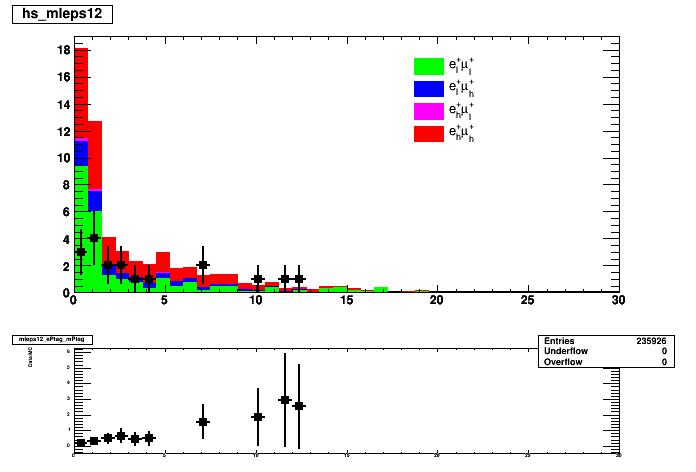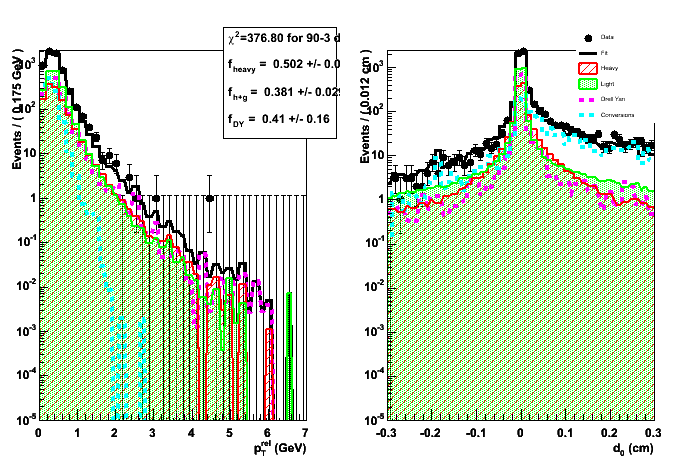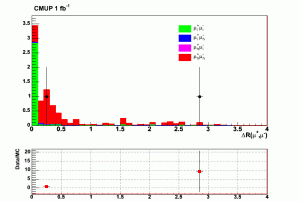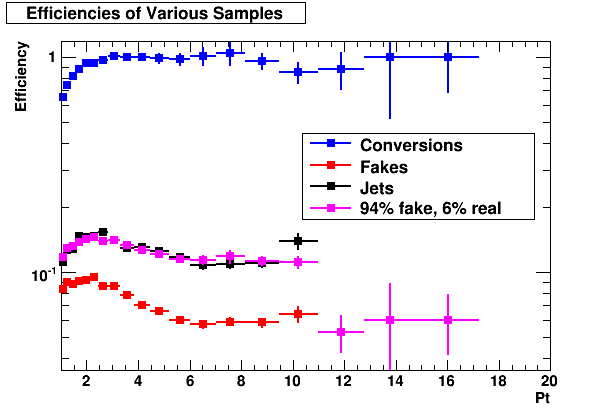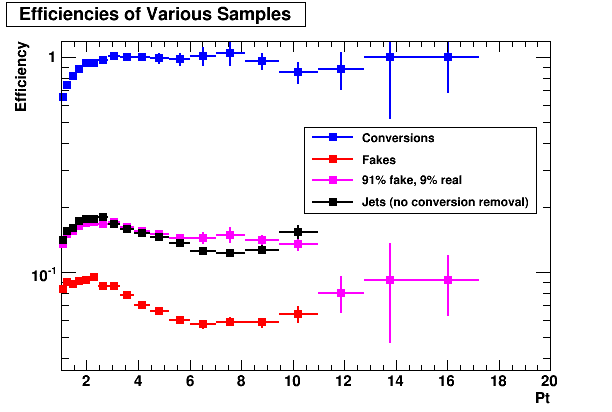Scott found a bug that lowered the opposite sign dilepton yield in data only. Here are the results after the bug fix.
TCE mu+ mu+:
#mu^{+}_{l}#mu^{+}_{l}=0.444913
#mu^{+}_{l}#mu^{+}_{h}=2.11369
#mu^{+}_{h}#mu^{+}_{h}=8.5773
nbg=11.1359
data=9
TCE mu+ mu-:
#mu^{+}_{l}#mu^{-}_{l}=3.11457
#mu^{+}_{l}#mu^{-}_{h}=2.00324
#mu^{+}_{h}#mu^{-}_{l}=2.43758
#mu^{+}_{h}#mu^{-}_{h}=36.3629
nbg=43.9183
data=23
TCE mu- mu-:
#mu^{-}_{l}#mu^{-}_{l}=0.974833
#mu^{-}_{l}#mu^{-}_{h}=1.68548
#mu^{-}_{h}#mu^{-}_{h}=8.6342
nbg=11.2945
data=8
CMUP mu+ mu+:
#mu^{+}_{l}#mu^{+}_{l}=0.400243
#mu^{+}_{l}#mu^{+}_{h}=0.972838
#mu^{+}_{h}#mu^{+}_{h}=5.16716
nbg=6.54024
data=5
CMUP mu+ mu-:
#mu^{+}_{l}#mu^{-}_{l}=1.93365
#mu^{+}_{l}#mu^{-}_{h}=1.10496
#mu^{+}_{h}#mu^{-}_{l}=1.33868
#mu^{+}_{h}#mu^{-}_{h}=19.3514
nbg=23.7287
data=16
CMUP mu- mu-:
#mu^{-}_{l}#mu^{-}_{l}=0.639936
#mu^{-}_{l}#mu^{-}_{h}=1.08228
#mu^{-}_{h}#mu^{-}_{h}=4.81011
nbg=6.53233
data=2
CMX mu+ mu+:
#mu^{+}_{l}#mu^{+}_{l}=0.169355
#mu^{+}_{l}#mu^{+}_{h}=0.564945
#mu^{+}_{h}#mu^{+}_{h}=3.43739
nbg=4.17169
data=0
CMX mu+ mu-:
#mu^{+}_{l}#mu^{-}_{l}=1.20664
#mu^{+}_{l}#mu^{-}_{h}=0.816829
#mu^{+}_{h}#mu^{-}_{l}=0.768016
#mu^{+}_{h}#mu^{-}_{h}=11.7364
nbg=14.5279
data=6
CMX mu- mu-:
#mu^{-}_{l}#mu^{-}_{l}=0.344287
#mu^{-}_{l}#mu^{-}_{h}=0.460449
#mu^{-}_{h}#mu^{-}_{h}=3.38036
nbg=4.1851
data=2
The background prediction is still above the data in all regions.
